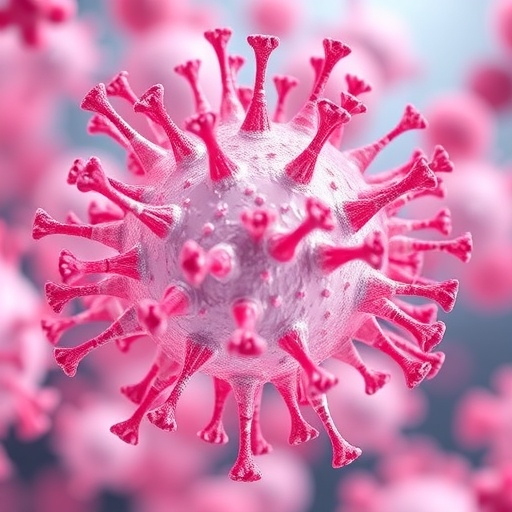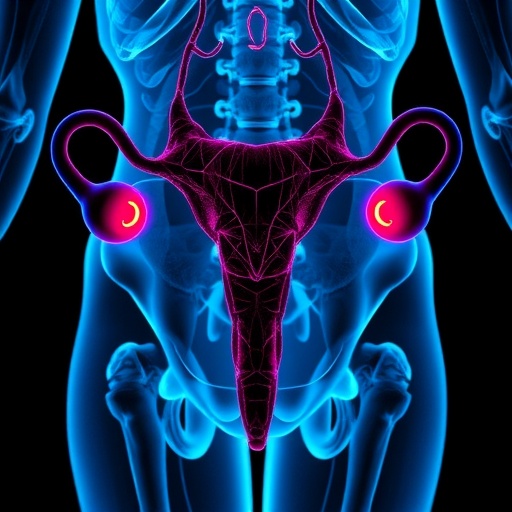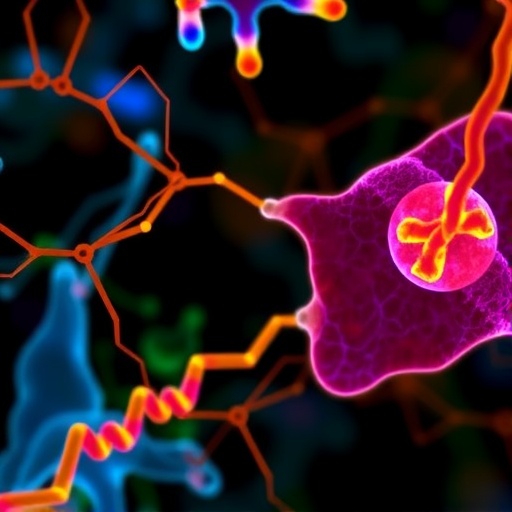In a groundbreaking leap forward in cancer therapy, a collaborative research team led by Professor Eijiro Miyako at the Japan Advanced Institute of Science and Technology (JAIST), together with Daiichi Sankyo Co., Ltd. and the University of Tsukuba, has unveiled an innovative bacterial treatment that functions independently of the immune system. This novel approach, termed AUN therapy, harnesses a carefully designed microbial consortium comprising two naturally occurring bacteria that work in an unprecedented symbiotic harmony to eradicate tumors, even in immunocompromised hosts—a population traditionally refractory to conventional immunotherapies.
The story of bacteria-based cancer therapy spans more than a century and a half, tracing back to 1868 when the German physician Busch documented tumor regression after bacterial infection. This pioneering observation was expanded by Dr. William Coley in the late 19th century, who developed “Coley’s toxins” aiming to stimulate the patient’s immune response against tumors. Despite remarkable early results, the field found greater promise in the advent of modern immunotherapies such as checkpoint inhibitors and CAR-T cell treatments that modulate or harness the immune system to target cancer cells. However, the dependency of all these therapies on intact immune function has been a critical limitation, especially for patients debilitated by chemotherapy or radiotherapy, which compromise their immune defenses.
Confronting these challenges head-on, the AUN therapy fundamentally redefines the paradigm by operating independently of host immune cells. Central to this breakthrough is the synergistic interaction between two bacterial species: Proteus mirabilis, designated as A-gyo, known to naturally inhabit tumor microenvironments; and Rhodopseudomonas palustris, called UN-gyo, a photosynthetic bacterium capable of regulatory functions. Together, these species establish an intratumoral microecosystem capable of inducing potent anticancer effects without eliciting the host’s immune response, thereby circumventing the drawbacks faced by immunocompromised patients.
.adsslot_CzoypQ35nD{width:728px !important;height:90px !important;}
@media(max-width:1199px){ .adsslot_CzoypQ35nD{width:468px !important;height:60px !important;}
}
@media(max-width:767px){ .adsslot_CzoypQ35nD{width:320px !important;height:50px !important;}
}
ADVERTISEMENT
The mechanism through which AUN executes its anticancer activity is multifaceted and highly specialized. Initially, the consortium targets tumoral blood vessels, inducing selective thrombosis—a process of clotting that effectively starves the tumor cells by cutting off their nutrient and oxygen supply. Concurrently, direct cytotoxic effects on cancer cells are observed. Intriguingly, the bacterial population ratio undergoes a dynamic and dramatic transformation once introduced into the tumor microenvironment: although injected at a 3:97 ratio favoring UN-gyo, the composition rapidly shifts to approximately 99:1 in favor of A-gyo. This population shift suggests a finely tuned intratumoral adaptation that heightens therapeutic efficacy.
Moreover, the tumor milieu triggers remarkable phenotypic changes in A-gyo, particularly inducing filamentation—a process where bacterial cells elongate without division. This structural transformation amplifies their tumor-killing potency, illustrating a sophisticated bacterial response to local tumor metabolites. The partnership is further modulated by UN-gyo, which plays a vital role in suppressing the pathogenic potential of both strains, thus minimizing adverse effects, including the infamous cytokine release syndrome (CRS) that plagues many immunotherapeutic interventions. The strategic suppression of CRS ensures that the therapy maintains an exceptional safety profile.
The philosophical underpinning of this cooperation draws inspiration from the ancient Japanese concept of “AUN,” which represents an ideal harmony between opposing forces. Here, A-gyo and UN-gyo embody this principle through a seamless division of labor where each partner contributes distinct yet complementary functions, culminating in a therapeutic synergy that transcends the capabilities of either bacterium alone. This elegant biological equipoise unlocks tumor-targeting efficiencies hitherto unattainable by traditional therapies reliant on host immune responses.
Experimental validation of this approach has been conducted in both murine models and human cancer xenografts, confirming the robustness of AUN’s tumor suppression in immunodeficient settings. Such immunocompromised models are critical proof-of-concept environments to demonstrate immune-independent efficacy. In all tested scenarios, the therapy achieved remarkable tumor regression with negligible side effects, heralding a potential revolution in oncology where patients with poor immune status may finally access effective bacterial therapeutics.
From a translational standpoint, the research team is actively preparing for clinical application with ambitious plans to initiate human trials within the next six years. The team’s vision is to propel this innovative treatment from the laboratory into the clinical arena through the establishment of a dedicated biotech startup. Should these clinical pathways succeed, the implications for cancer care are profound, offering an effective alternative for patients who currently face limited treatment options due to compromised immunity.
This new bacterial therapy also addresses a critical bottleneck in the field—therapeutic specificity and safety. Traditional use of oncolytic bacteria has been hampered by concerns over systemic infections and severe inflammatory responses. By leveraging the interplay between A-gyo and UN-gyo, the consortium mitigates these risks, creating a biocompatible microbial therapeutic that localizes activity within tumors and avoids off-target effects. The fine-tuned balance achieved underscores a novel principle in synthetic ecology applied to medicine.
Importantly, the study’s findings and technological advances establish a foundation for future innovative bacterial consortia designed to tackle other treatment-resistant diseases. The paradigm of engineering microbial partnerships with adaptive responses and mutual regulation is set to expand the horizons of microbiome-based medicine. Such approaches may redefine the role of bacteria from mere commensals and pathogens to powerful allies in therapeutic regimens.
The publication of this study in Nature Biomedical Engineering cements its significance in the scientific community and underscores a transformative milestone in cancer therapy. The research not only enriches the fundamental understanding of tumor-microbe interactions but also pioneers a horizon-shifting therapeutic strategy. As this immune-independent bacterial therapy progresses towards clinical realization, it holds the promise to revolutionize oncology by offering hope and new options to those patients wracked by inefficacy of immune-targeted treatments.
In summary, the AUN bacterial consortium embodies an extraordinary convergence of microbiology, oncology, and synthetic biology. Its precise intratumoral orchestration and immune-independence represent a compelling breakthrough that challenges longstanding limitations in cancer treatment. The synergy of Proteus mirabilis and Rhodopseudomonas palustris opens a novel avenue for bacterial therapeutics, with the potential to redefine cancer treatment paradigms for immunocompromised populations worldwide.
Subject of Research: Bacteria-based immune-independent cancer therapy using a microbial consortium.
Article Title: Tumour-resident oncolytic bacteria trigger potent anticancer effects through selective intratumoural thrombosis and necrosis.
News Publication Date: 5 August 2025.
Web References: https://doi.org/10.1038/s41551-025-01459-9
References: Iwata et al., Nature Biomedical Engineering, 2025.
Image Credits: Eijiro Miyako, Japan Advanced Institute of Science and Technology (JAIST).
Keywords: Cancer, Bacteria, Oncolytic therapy, Immunology, Oncology, Microbiology.
Tags: AUN bacteria cancer treatmentbacterial treatment for immunocompromised patientscancer immunotherapy breakthroughscancer treatment evolutionDaiichi Sankyo cancer innovationEijiro Miyako researchhistorical cancer therapy advancementsimmune-independent cancer therapymicrobial consortium in cancernovel approaches to cancer therapysymbiotic bacteria for tumor controltumor eradication without immune system





